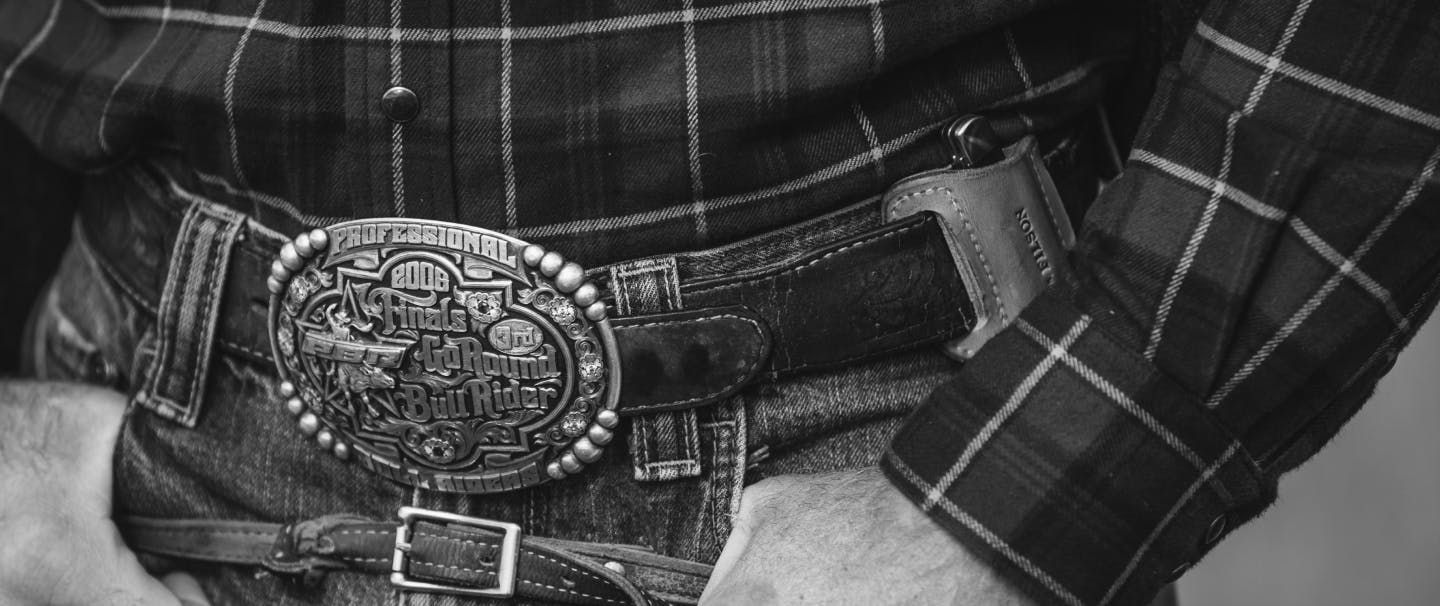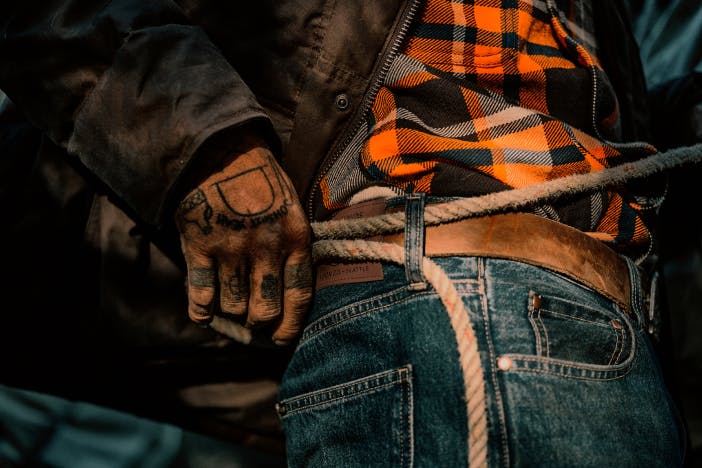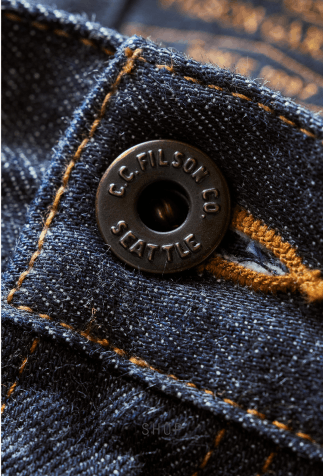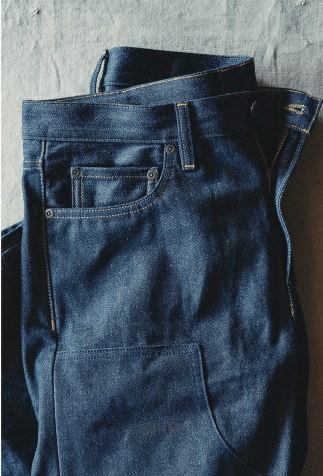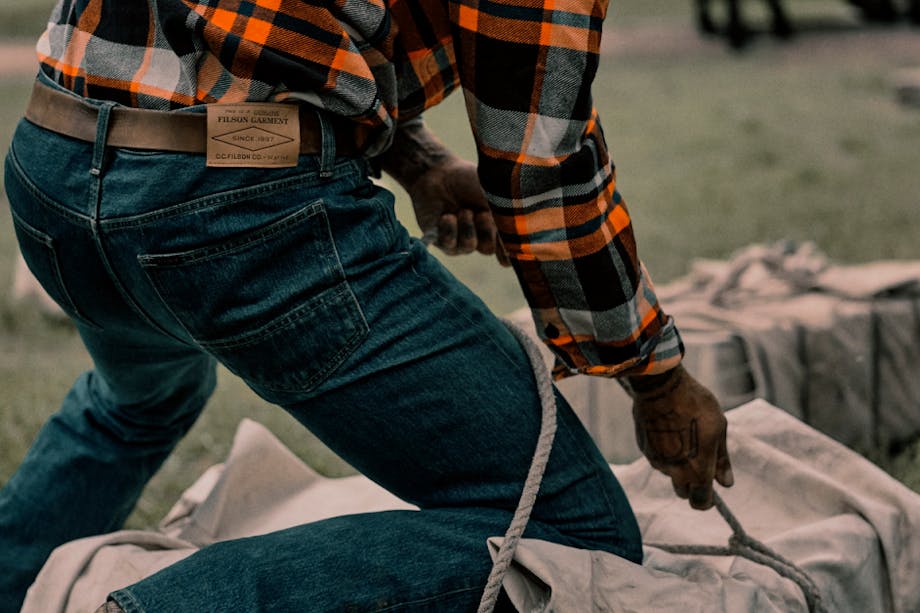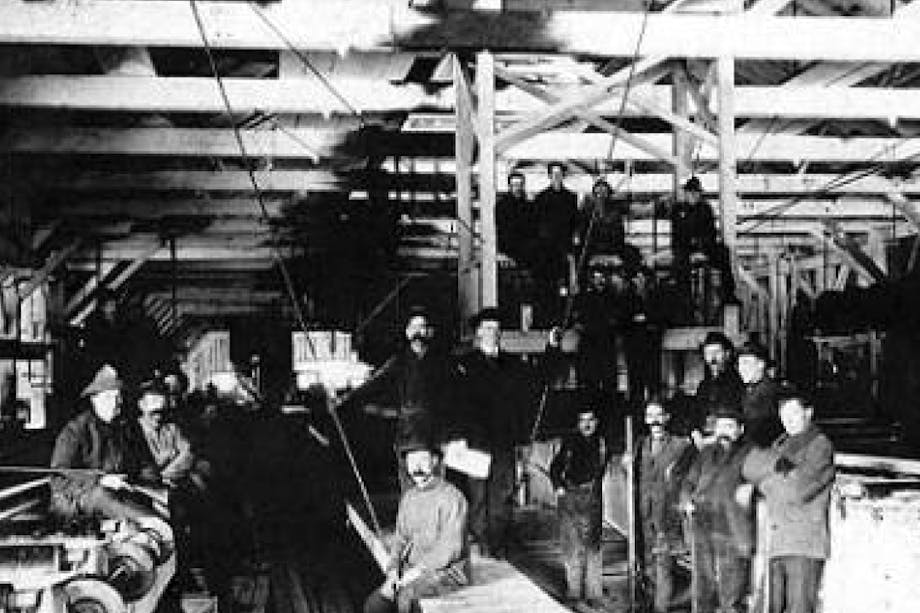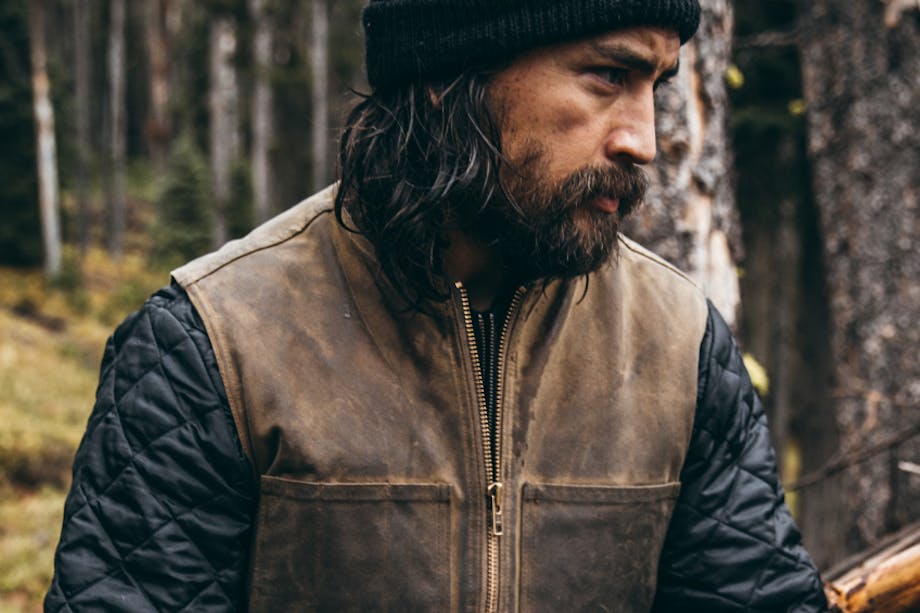The history of denim in America dates back to the 1840s, when the durability of the warp-faced, twill textile was a proven choice for workwear clothing, with pants and overalls much in demand. The blue threads of woven cotton were dyed with indigo through a process known as “rope dying” or “chain dying,” while the weft threads were left white and visible only on the reverse side. Over time, other weights of denim were made available, along with different colors: tan, black, and gray.
For laborers in the fields, coal mines, forests, and mills, denim was an inexpensive clothing option that was widely available and came in all sizes. During the California Gold Rush of 1848 to 1855, the prospector dressed in his denim work clothing, field jacket, and hip waders was a common sight.

Gold miners with drilling equipment, Mogollon, New Mexico 1940’s.
Hard labor required
an equally rugged fabric…
A patent for the first denim jeans was registered by David Jacobs and Levi Strauss in 1873 for their signature 501 jeans. The original design offered four pockets (later changed to five), with copper rivets sewn in for reinforcement of the material at wear points. Original features that changed over time included the removal of these rivets from the crotch area during World War II (due to metals rationing) and the omission of a cinch strap across the back of the waistband that allowed adjustment in size. A sample page from the 1908 Sears Roebuck catalog listed “working pants, jumpers and overalls of all kinds,” with prices ranging from 48 cents for a double-bib, blue apron pair of overalls to 64 cents for a pair of heavy, nine-ounce, redback denim overalls with reinforced and riveted pockets.
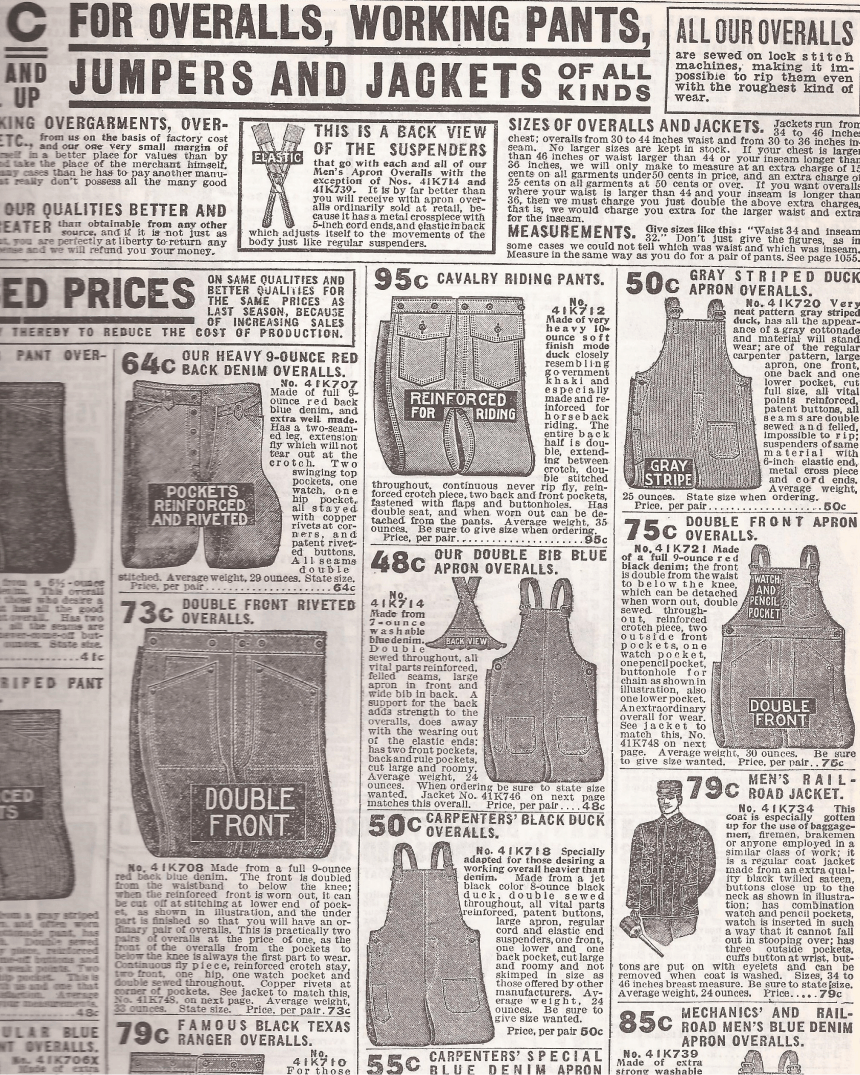
1908 Sears Roebuck catalog, featuring denim pants and overalls.
During World War II, denim was employed as a substitute for other fabrics needed for the war effort. Machine-stitched bags for carrying groceries were made from blue denim and emblazoned on the side with a “V” for “Victory” in red leather and other fabric. Denim also found application in a wide variety of uniforms, ranging from prison garb to the “Gray Lady” uniforms of the 1940s. American uniform caps worn by Women Airforce Service Pilots (WASP) during the war were also made of blue denim (Neiman Marcus fashion coordinators personally fitted each girl for her uniform before her class graduated from training). During the 1950s, denim started to gain traction in the fashion world. In 1958, a LIFE magazine pictorial spread showed stewardesses sunbathing beside a hotel pool, wearing one-piece bathing suits of blue denim. Clothing articles for women included everything from skirts and jumpers to open-toe shoes; for men, jean jackets, caps, and jeans had transitioned from being considered “work only” clothing to casual clothing for everyday wear.

Troops on board the USS Panaman while en route home from France in April 1919. Note the denim working jacket worn by the Soldier in the center foreground. Donation of Dr. Mark Kulikowski, 2008. U.S. Naval History and Heritage Command Photograph.
Over the next half-century, denim enjoyed new popularity as a prominent fabric in jeans, jackets, and other everyday clothing worn by Hollywood starlets like Marilyn Monroe and Brigit Bardot, and actors who portrayed rebels such as James Dean and Marlon Brando. Iconic singers and musicians like Elvis Presley and Bob Marley furthered the mass appeal of denim as a choice with younger generations. The age of denim as a unisex material in clothing had arrived, but not without some concern. “Polite society” was disturbed by its growing association with biker gangs and teen turmoil—so much so that, in 1955, several denim mills and manufacturers organized to create the Denim Council, hoping to redirect its reputation. Some school districts even banned students from wearing jeans.
A high-quality pair of jeans could last for years or even decades, and these types of pants looked better as they aged.
“Bell-bottoms,” jeans that flared from the bottom of the calf (a traditional standby uniform of enlisted men of the U.S. Navy since the early 1800s), found mainstream appeal with the help of television celebrities like Sony and Cher and other counter-culture icons. Denim’s appeal has remained unchanged from its earliest days when it was worn by cowpunchers driving herds of cattle across the plains, or railyard day laborers who strove to connect the United States with new rail lines. Hard labor required an equally hard fabric that could weather the elements and stand the test of time. A high-quality pair of jeans could last for years or even decades, and these types of pants looked better as they age.

Filson Denim is the latest chapter in a legacy that spans over a century of outfitting customers for the most demanding conditions. Only the finest and most rugged materials are sourced for our unfailing goods. By manufacturing limited runs in the American West from fine selvage denim, we ensure each pair of jeans meets the exacting standards befitting the Filson name. When toughness is a must, you might as well have the best.
Filson’s denim line shares the same characteristics of the material’s origin—built for hardworking tradespeople, farmhands, artisans, construction workers, and laborers in the forest, factory, and field. In a nod to conservation potential, over the past decade, organizations such as the Puget Sound Clean Air Agency have even turned recycled denim into pencils. Perhaps one will be used to write the next chapter in the long history of denim.

